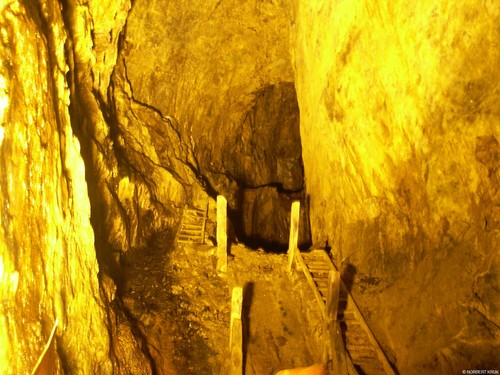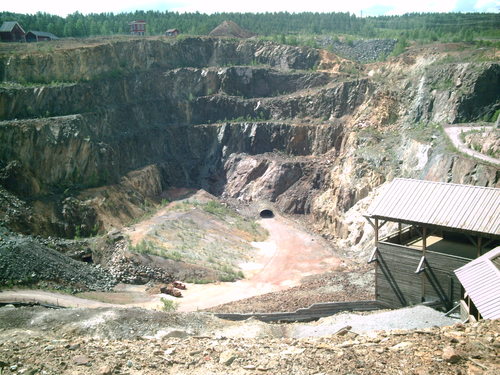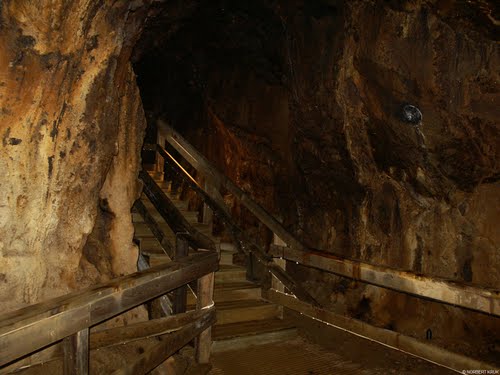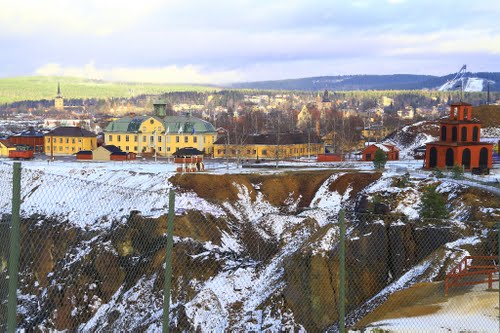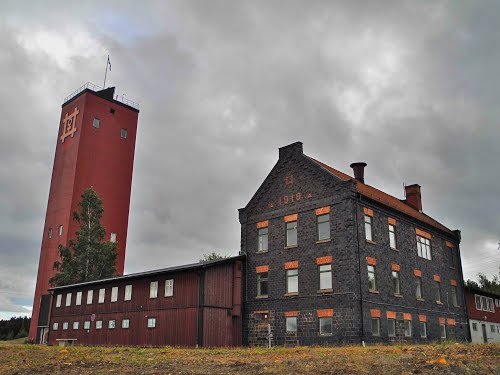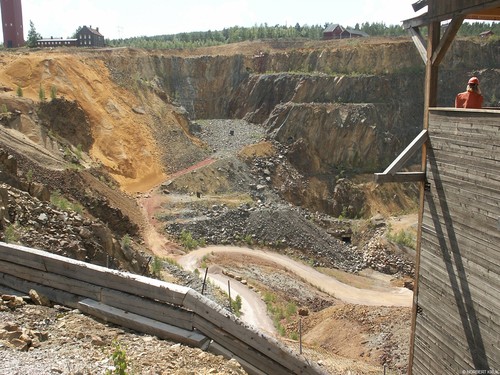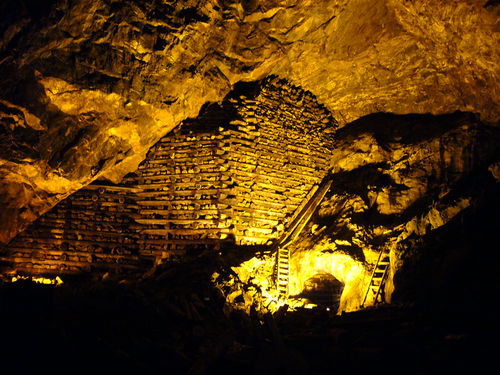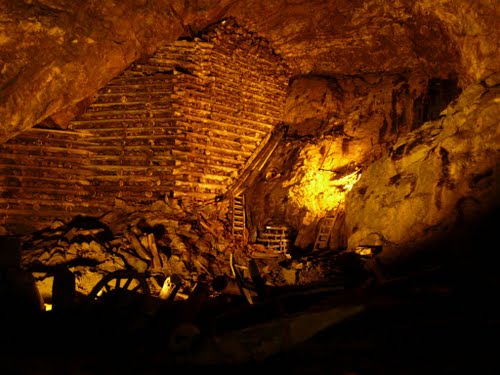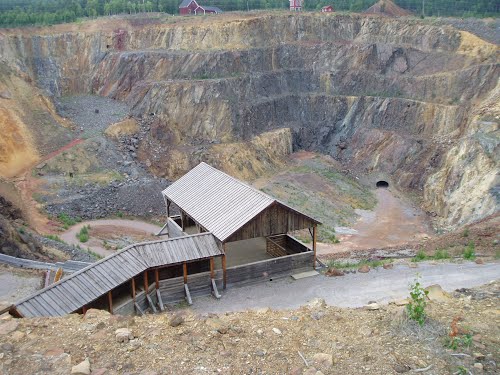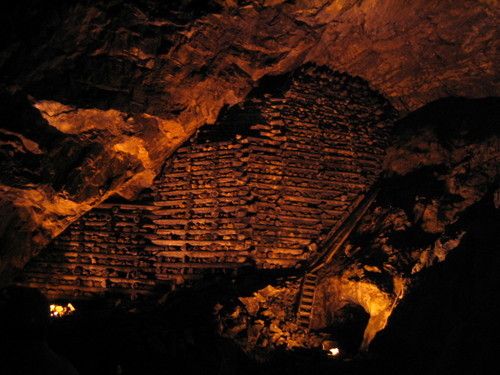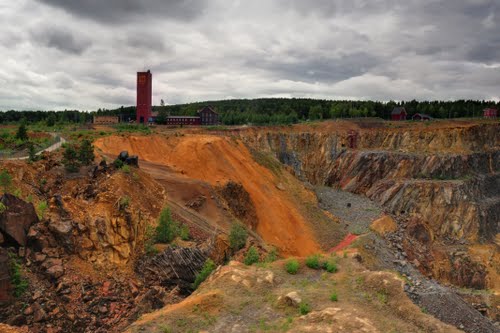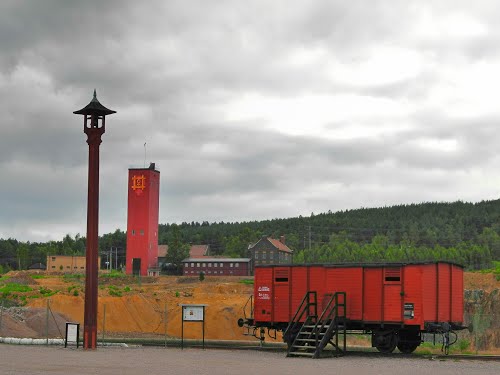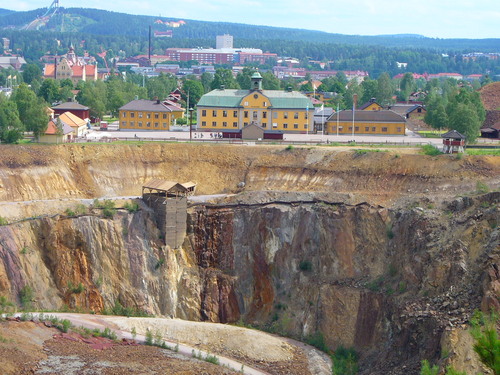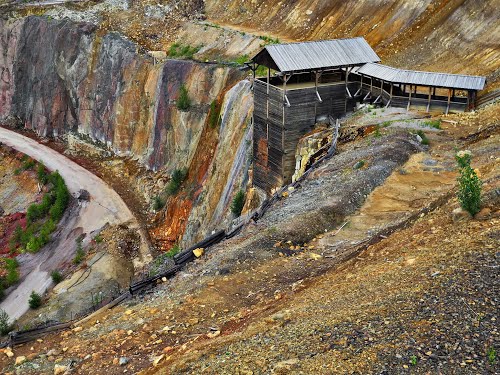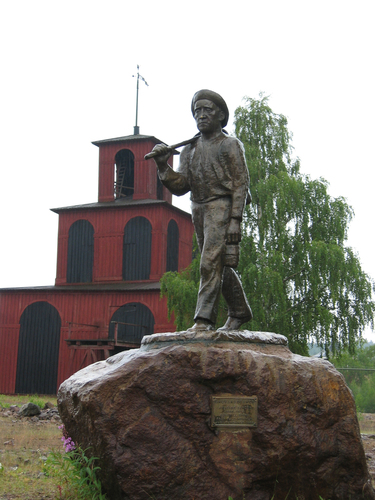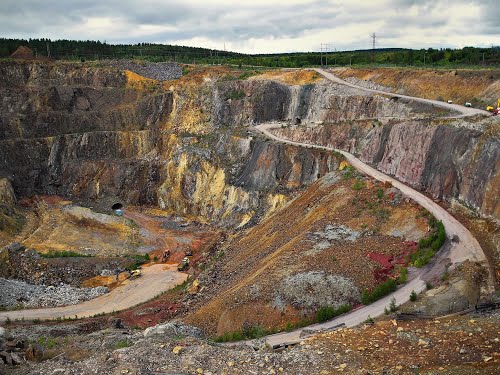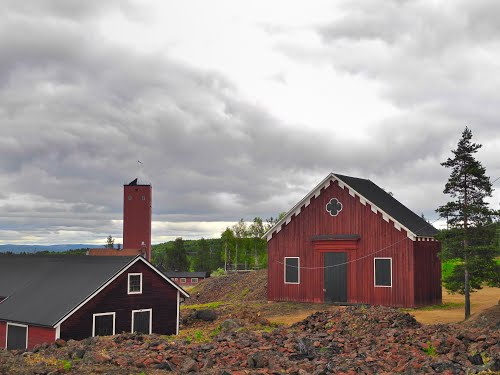Falun Mine was a mine in Falun, Sweden, that operated for a millennium from the 10th century to 1992. It produced as much as two thirds of Europe's copper needs and helped fund many of Sweden's wars in the 17th century. Technological developments at the mine had a profound influence on mining globally for two centuries. The mine is now a museum and in 2001 was designated a UNESCO world heritage site.
History
There are no written accounts establishing exactly when mining operations at Falun Mine began. Archaeological and geological studies indicate, with considerable uncertainty, that mining operations started sometime around the year 1000. The mine was definitely operating by 1080, but no significant activities had begun before 850. Objects from the 10th century have been found containing copper from the mine. In the beginning, operations were of a small scale, with local farmers gathering ore, smelting it, and using the metal for household needs.
Around the time of Magnus III, king of Sweden from 1275 to 1290, a more professional operation began to take place. Nobles and foreign merchants from Lübeck had taken over from farmers. The merchants transported and sold the copper in Europe but also influenced the operations and developed the methods and technology used for mining. The first written document about the mine is from 1288, it records that, in exchange for an estate, the Bishop of Västerås acquired a 12.5% interest in the mine.
By the mid 14th century, the mine had grown into a vital national resource, and a large part of the revenues for the Swedish state in the coming centuries would be from the mine. The then king, Magnus IV, visited the area personally and drafted a charter for mining operations, ensuring the financial interest of the sovereign.
Methods
The principal method for extracting copper was heating the rock via large fires, known as fire-setting. When the rock cooled down, it would become brittle and crack, allowing manual tools such as wedges and sledge hammers to be brought to bear. After the ore had been transported out of the mine it was roasted to reduce sulfur content in open hearths. The thick, poisonous smoke produced would be a distinguishing feature of the Falun area for centuries. After the roasting, the ore was smelted, the output of which was a copper rich material. The cycle of roasting and smelting was repeated several times until crude copper was produced. This was the final output from the mine, further refinement took place at copper refineries elsewhere. This process was used without any major change for seven centuries, until the end of the 19th century. It is likely that the methods and technology for fire-setting and drainage were imported from German mines, such as in the Harz Mountains.
Free miners
The organizational structure of Falun Mine created under the 1347 charter was advanced for its time. Free miners owned shares of the operation, proportional to their ownership of copper smelters. The structure was precursor to modern joint stock companies, and Stora Enso, the modern successor to the old mining company, is often referred to as the oldest joint stock company still operational in the world.
Golden era
In the 17th century, production capacity peaked. During this time, the output from the mine was used to fund various wars of Sweden during its great power era. The Privy Council of Sweden referred to the mine as the nation's treasury and stronghold. The point of maximum production occurred in 1650, with over 3,000 tonnes of copper produced.
he mountain had been mined for nearly half a millennium towards the end of its golden era. Production had intensified in the preceding decades, and by 1687 the rock was crisscrossed by numerous shafts and cave-ins were not unusual. Great effort went into producing maps of the mine for navigation, but there was no overall organization nor any estimation of the strength of the mountain. In the summer of 1687, great rumblings could be heard regularly from the mountain. On Midsummer's Eve of that year, the dividing wall between the main pits and the foundations gave way, and a significant portion of the mine collapsed. This could easily have become a great catastrophe, killing and trapping the hundreds of men working in the mine, had it not occurred on Midsummer's Eve, one of the two days of the year on which the miners were not working, the other being Christmas.
Life in the mine
Fires were lit at the end of the day to heat the ore and allowed to burn through the night. The next morning the fires would be put out and the ore broken loose. In this manner, the miners could advance about 1 m per month. The miners working the fires and breaking the rock were the best paid and most skilled. Hand barrows were used to transport the broken ore, in relays of about 20 m with multiple teams working long distances. This was usually the work newcomers were assigned to prove themselves. The work was hard and the mines very hot from the constant fires so it was not surprising that the miners were good customers of local drinking establishments. Drunkenness was considered quite normal for miners.
Modern history
Copper production declined during the 18th century, and the mining company began diversifying. It supplemented copper extraction with iron and timber production. Production of the iconic falu red paint began in earnest. In the 19th century, iron and forest products continued to grow in their importance. In 1881 gold was discovered in Falun Mine, resulting in a short-lived gold rush. A total of 5 tonnes of gold would eventually be produced.
By the late 20th century, the mine was no longer economically viable. On December 8, 1992, the last shot was fired in the mine, and all commercial mining ceased. Today the mine is owned by the Stora Kopparberget foundation which operates the museum and tours.

